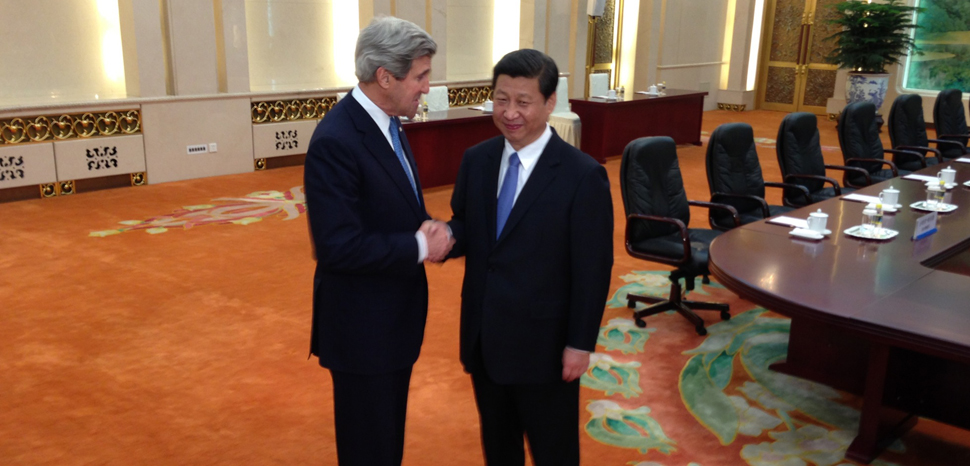On December 3, 2020, the United States Congress quietly passed a bill threatening to restrict access to US stock and money markets for any foreign firm refusing to comply with US oversight audits. With unanimous bipartisan support in the House and Senate, the “Holding Foreign Companies Accountable Act” (HCAA), became the latest in a series of efforts by US lawmakers to increase economic pressure on China, amid rising tensions between the world’s two largest economies.
The bill, which requires foreign firms to prove they are not owned or operated by foreign powers, gives the US government authority to review corporate financial audits. And while the law covers any foreign firm listed on US exchanges, its provisions do little to disguise the fact that China is its primary target. Indeed, US regulators have long struggled to inspect the audits of Chinese firms listed on US exchanges, particularly those with ties to the Chinese military, as Chinese authorities often prevent audit documents from leaving China, citing national security concerns. In practice, however, this means that US regulators struggle to verify the reputability of Chinese firms, or identify potential risks for US firms and investors, particularly the risk of intellectual property theft.
This most recent episode is significant, not simply because it is the latest in a series of high-stakes economic escalations, but because of what such escalations reveal about the nature of US-China relations and the economic conflict that has consumed both parties since the earliest days of the Trump administration. This article details this latest round of geoeconomic tension and explains its strategic importance in the wider context of the US-China battle for technological dominance. It then examines why such a move is strategically short-sighted, and provides potential policy remedies to avoid further escalation of tensions.
‘De-listing’ bad actors
In the days since HCAA was signed into law, the New York Stock Exchange has responded by removing three Chinese telecom companies – China Mobile Ltd, China Telecom Corp Ltd and China Unicom Hong Kong Ltd – from its indices, leading to a 3% drop in the companies’ Hong-Kong-listed assets. This ‘delisting’ by the NYSE, however, was not an isolated response. S&P Dow Jones Indices, which has also made similar decisions to de-list Chinese firms in the wake of Congressional efforts, said it would remove the three telecom companies from its benchmarks. Other indices, including the UK’s FTSE Russell and MSCI Inc, have cut a dozen Chinese companies on the list from their benchmarks including the likes of China United Network Communications, Semiconductor Manufacturing International Corporation, and Nanjing Panda Electronics.
The move has triggered warnings of retaliation from Beijing. In a statement, a spokesman for the Chinese Commerce Ministry said, “China opposes the Americans from abusing national security by listing Chinese companies into the so-called ‘Communist China Military Companies’ list and will take the necessary countermeasures to resolutely safeguard the legitimate rights and interests of Chinese companies.” While the Ministry did not offer details about what such countermeasures might involve, it called on the United States to meet China half-way, and put bilateral trade-talks back on track.
On its surface, this US decision appears to be an extension of US policy in the wider context of the US-China trade war. However, a more careful examination of its contours indicates that US motives have less to do with asserting economic pressure on China, and more to do with defending its competitive advantage in critical technologies and emerging technological infrastructure, specifically 5G communication technologies, and the installation of global internet infrastructure. It thus comes as little surprise that recently-targeted Chinese firms are predominantly Chinese tech and telecoms companies. Indeed, the two states appear locked in a struggle for technological dominance, with wide-ranging implications for state security the world over.
The US-China standoff
For several years, the US and China have been competing for dominance over global technology systems. This competition, as mentioned above, increasingly revolves around the debate over fifth-generation (5G) cellular networks that will enable enhanced digital communications, and global internet cable infrastructure through which it will operate. Indeed, first adopters of 5G are expected to sustain a significant long-term competitive advantage over their adversaries. The US and China therefore see 5G leadership as a matter of economic and national security.
As part of its approach, the US has taken steps to insulate its tech firms from intellectual property theft by competing Chinese firms, a practice that has generally been tied to forced technology transfers for foreign firms wishing to do business in China. Such steps have included the implementation of export controls to review joint ventures involving sensitive US technology. US regulators have also considered visa restrictions for Chinese researchers over fears they may acquire sensitive intellectual property, as well as ‘entity restrictions’ that prevent Chinese companies from acquiring US-made components for critical technologies. Such restrictions have recently been applied to the Chinese technology giant, Huawei, regarding their acquisition of US-made semiconductor technology.
For its part, China’s technology transfer policy has sought to stop foreign companies from dominating its infant industries. By nurturing its technological development, China has thus sought to reduce its dependence on foreign firms for supplies of critical inputs to its digital infrastructure, and to scale up its own production of intermediate inputs. Moreover, in seeking to restrict US dominance, China has recently announced the creation of an ‘unreliable entities list’ giving it the power to blacklist foreign firms that are deemed threatening to Chinese interests. Consequences for firms running afoul of the Chinese government include restrictions or prohibitions on China-related trade, investment in China, and travel or work permits.
Technological competition between the US and China has raised the prospect of emerging technological spheres of influence. Indeed, in the case of 5G specifically, the Trump administration signaled very clearly that countries and companies may ultimately be forced to choose sides. Such a policy is unlikely to shift under the Biden administration. Recent Congressional approval of the HCAA, and forced de-listing of Chinese telecom firms from US markets are likely to entrench, and possibly accelerate this trend, making the final outcome increasingly difficult to foresee.
The (self) harm of de-listing
The threat of de-listing may seem like an effective short-term action, as it signals to Chinese multinationals and government ministries the limits of US tolerance for intellectual property theft. Indeed, while such policies may be attractive to lawmakers armed with limited tenure and short-termist agendas, the widespread use of de-listing by US government agencies may amount to nothing more than a pyrrhic victory. De-listing Chinese firms (or any foreign firm for that matter) directly limits US foreign policy in two ways: 1) the loss of monitoring capability, and 2) the loss of financial leverage.
Monitoring capabilities are an important component of US national security, as they provide informational advantages about US adversaries to the US government. By gaining access to US markets, international firms are subjected to oversight and regulation regarding their behaviors, their clientele. and their transactions, all of which allows the US to make important strategic decisions about the future of US foreign policy in key areas. Indeed, such monitoring capabilities have been vital to the implementation of powerful financial sanctions, like those leveraged against Iran, North Korea, and Russia in recent years. Moreover, while de-listing may be a powerful financial punishment, the use of de-listing ultimately relinquishes the ability of the US to exercise such leverage in the future, when the cost to Chinese firms and government actors would be most effective. With firms de-listed, however, the ability to coerce foreign firms to play by American rules is severely limited. By de-listing actors challenging US national interests, the US runs the risk of losing observational and financial leverage over Chinese firms, and their ability to regulate firm behavior and hold them to account is willingly relinquished.
On balance, this article suggests that, while de-listing may be necessary in unique cases, such tools should not be regularly used, nor should they become orthodox policy measures. Instead, the author proposes a multilateral approach, in which US allies collectively reinforce laws like the HCAA to subject foreign firms (particularly Chinese firms) to additional oversight by coordinating similar regulatory responses in multiple jurisdictions. Indeed, allies like Great Britain and various EU-member states have had their own struggles with Chinese technological advances, as significant portions of EU investment in 5G infrastructure have recently fallen to Huawei, a Chinese technology firm. However, armed with powerful financial markets and central banks in London, Paris, Berlin, and Brussels, US allies have the ability to contribute additional oversight and scrutiny that would greatly reinforce US efforts and constrain Chinese adventurism, all while broadly promoting Western security interests in the long term.
Ultimately, in the longer term, this means the United States and the West should be preparing to take the lead on 6G technology. Particularly, Western government should fund research and development of the technology at domestic universities and provide private sector industries with seed funding and proper incentives. The US has been slow to respond to China’s technological growth, but it must be prepared to go beyond its current policy tool-kit and become proactive decision-makers in order to ensure long-term national security.
The views expressed in this article are those of the authors alone and do not necessarily reflect those of Geopoliticalmonitor.com




